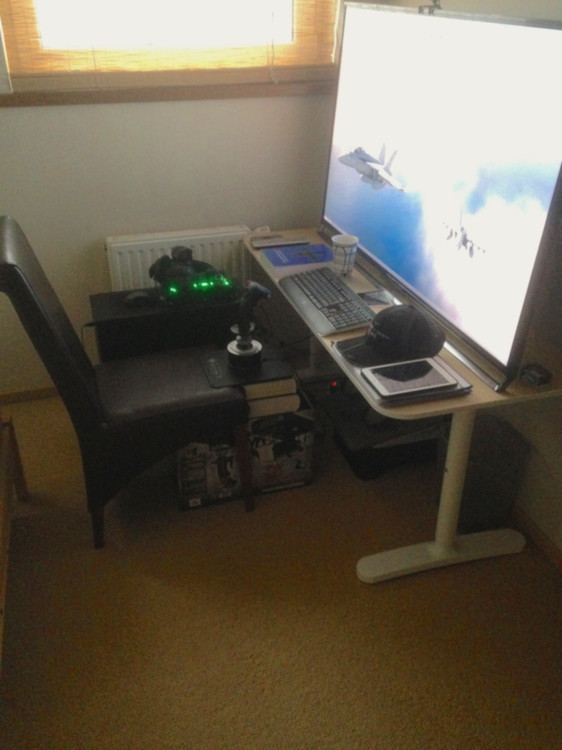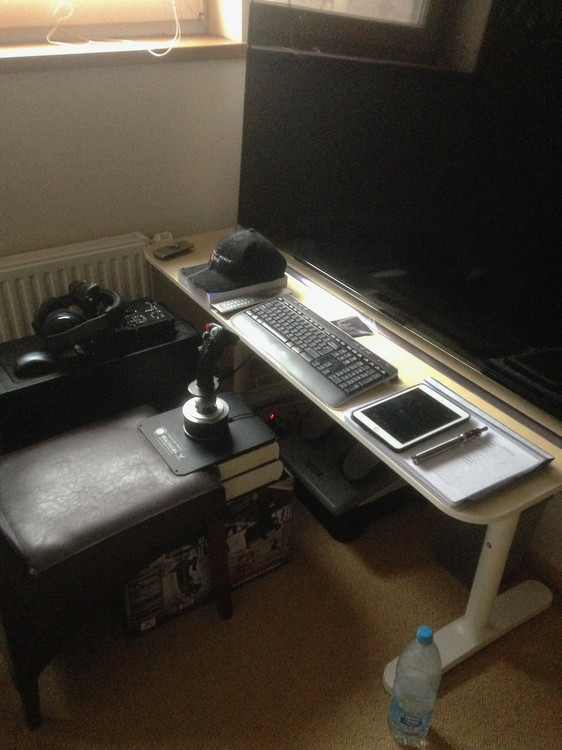

IronHog
Members-
Posts
34 -
Joined
-
Last visited
About IronHog
- Birthday 01/29/1982
Personal Information
-
Flight Simulators
DCC A-10C Warthog
DCS Black Shark -
Location
Poland
-
Interests
programming, flight simulators, pool, guitar
-
Occupation
Senior Development Engineer at ATOS
Recent Profile Visitors
The recent visitors block is disabled and is not being shown to other users.
-
BuggSmasher started following IronHog
-
Amazing! We have been waiting so much for this. Thanks a lot!
-
As long as you do not use dynamic wether, in DCS it is enough to set you altimeter so that is shows elevation of the airport you are taking off from. You should not set you altimeter back to standard pressure (29.92) just after takeoff. You should do it at specific FL (e.g. FL100) and remember to reverse it to previous setting when you descent below that altitude.
-
I am glad I could help :-)
-
Hi again, The need to use of TMS Aft Short depends on the Mav mode you are going to use it in and the size of the target. If you use Mav in the Slave mode (using SOI like TGP to automatically slew it to SPI) then it acts as if in ground stabilise mode and if the target i small enough so that i does not matter where the missile will hit then it is enough to press TMS Forward Short to close the gates and riffle. In cases when Mav is used in Slew mode(using Slew Control to move maverick sicker) or you want the missile to hit a specific part of the target(like window in the building) then you slew it somewhere near the target press TMS Aft Short to ground stabilise it and then use your slew control again to line it up perfectly to the point where you want the missile to hit. The moment you start to slew it after ground stabilising it will automatically close the gate so that you do not need to press TMS Forward Short. I hope it clears this a little bit more for you.
-
Hi, If I am not mistaken, after grand stabilising, TMS Forward Short to acquire track on target should do the job.
-
Thanks! Below my settings for comparison: Viewing Mode: Monitor Backlight: 90 contrast: 85 brightness: 0 color: 80 tint: 0 sharpness: 60 color temp: normal vivid color: off color remaster: min adaptive backlight control: off letterbox: normal ambient sensor: on noise reduction: max mpeg remaster: off caption smoother: off brilliance enhancer: min Advanced settings: contrast control: auto Option settings: game mode: on 4K pure direct: off I noticed that I do not have a black level setting - probably one of the differences between E and U models, but just out of curiosity does it make noticeable difference ? What is more I found two interesting videos. The one shows all settings after Pana calibration. This is specifically for E model but I suppose U cannot be much different ? I applied all those settings for Professional1 as well as Monitor Viewing modes and I must say I am happy with the results - colors are more natural and vivid now (especially in Professional1 mode). The one is about removing green and magneta tint if needed.
-
At last, I am next lucky guy to play DCS at 58" 4K screen. It is so awesome to see your wingman a few miles away, or civilian traffic from 8k feet :-) I bought Panasonic 58" LED TX-58AX800E and as a few of you guys already have a similar model already I wanted to ask if you played some more with picture settings, have you found maybe a sweet spot and would like to share ? I am currently trying all the options and there are is many... First two photos of my setup included ;-)
-
Great tool indeed!
-

Altimeter - Effect of Temperature on Pressure
IronHog replied to IronHog's topic in DCS: A-10C Warthog
I haven't thought about this earlier - but certainly having different altimeter readings on different aircrafts would be a terrible idea so thanks to effete and Kaiza for the clarification :) My question then is still to be answered - is the impact of non-standard temperature correctly modeled in simulation in regards to altimeter readings? Cheers Luk -

Altimeter - Effect of Temperature on Pressure
IronHog replied to IronHog's topic in DCS: A-10C Warthog
And this answers my question - it looks like the simulation does not have to implement it as far as concerning the A10 altimeter :D I was just about to ask for the purpose of the temperature reading :) ADC? OAT? - what they stand for ? So as I understand A-10 altimeter will show true altitude despite non standard temperature because of being supplied with the current free air temperature value at given altitude and then as I assume applying it to ISA temperature lap rates? -

Altimeter - Effect of Temperature on Pressure
IronHog replied to IronHog's topic in DCS: A-10C Warthog
First I need to say that I am a noob in those subjects so my thinking may be wrong here. From my understanding I am definitely not asking about density altitude which is a pressure altitude corrected for non standard temperature (it shows how temperature affects density of the air and by that aircraft performance) What I am asking about is indicated altitude corrected for non standard temperature (true altitude modulo instruments errors) - it shows how temperature affects pressure of the air and as the pressure is the input value to the altimeter which calculates altitude based on the given pressure and applying standard pressure lap rates to it, the not standard temeprature may cause wrong readings on the gauge What is more if we may have a standard 29.92"Hg despite very hight temperatures it looks like under non standard temperatures the lap rates of pressure are different from ISA ones and that is why the altimeter shows wrong altitude. -

Altimeter - Effect of Temperature on Pressure
IronHog replied to IronHog's topic in DCS: A-10C Warthog
Great - thanks for the answer - now I am sure I understand it correctly :) -
Hi, My questions concerns implementation of the altimeter in the simulation. For sure the deviation of the pressure from ISA is modeled, but how about temperature? As far as I know the rule of thumb is that for each 10 degress that the outside air temperature is warmer than ISA standard the indicated altitude should be increased by 4% to get the true altitude. So for example: airfield elevation: 1000ft temperature: 43 degrees (30 more than ISA at this altitude) pressure 29.92"Hg (standard see level pressure - I am assuming such a pressure is still possible even having such high tempereture?) Applying the 4% rule of thumb the altimeter at this airfield should read 12% less which gives about 880ft. I am just very curios if this effect is implemented in the simulation altimeter ( I would check it myself but for next 7 days I am thousands miles away from my rig and not knowing this is killing my vacations ;) )
-

Navigation Video : HSI Course Deviation Indicator
IronHog replied to Fish's topic in DCS: A-10C Warthog
Thank you very much for this great tutorial! - learnt a lot watching it. -
For sure!, here it goes: http://dl.dropbox.com/u/15482534/FLIGHT%20PREPARATION.docx http://dl.dropbox.com/u/15482534/STARTUP.docx



